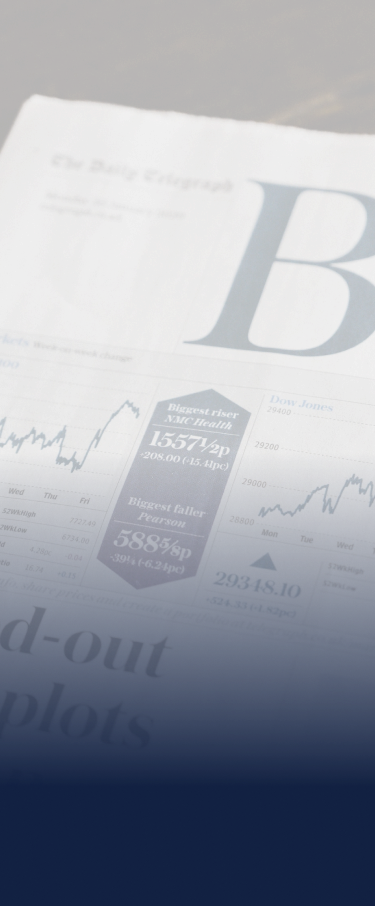- The May US Core Personal Consumption Expenditures Price Index Month-on-Month came in higher than expected at 0.2% versus 0.1% in a Bloomberg Survey
- The May US Initial Jobless Claims came in lower than expected at 236,000 versus 243,200 in a Bloomberg Survey
- The 1Q US GDP Annualized QoQ came in lower than expected at –0.5% vs –0.2% in a Bloomberg Survey


INSIGHTS 

INVESTMENT STRATEGY
THE BASICS
DOWNLOADS 

 DOWNLOAD
DOWNLOAD

 DOWNLOAD
DOWNLOAD

 DOWNLOAD
View all Reports
DOWNLOAD
View all Reports


Economic Updates
Monthly Economic Update: Fed cuts incoming
 DOWNLOAD
DOWNLOAD

Consensus Pricing
Consensus Pricing – June 2025
 DOWNLOAD
DOWNLOAD

Economic Updates
Policy Rate Update: Dovish BSP Narrows IRD
 DOWNLOAD
DOWNLOAD
Follow us on our platforms.


TOP SEARCHES



Market Movements
Read this content. Log in or sign up.
If you are an investor with us, log in first to your Metrobank Wealth Manager account.
If you are not yet a client, we can help you by clicking the SIGN UP button.


As of July 3, 2025
 What to watch out for next?
What to watch out for next?



What happened last week? (June 24 - 30)
Bonds rallied last week driven by lower benchmark yields amid dovish statements from US Federal Reserve (Fed) officials, easing fears of higher oil prices from the Israel-Iran conflict, and weaker economic data. Earlier in the week, Fed Governor Michelle Bowman, a notable hawk, gave support for a rate cut as soon as July. Her comments echoed statements from a Fed official the prior week. Lower oil prices from de-escalating tensions between Israel and Iran further added to the bullish momentum. The rally extended by the close of the week with the final reading of 1Q US gross domestic product (GDP) and Personal Consumption revised lower while Real Personal Spending for the month of May declined by 0.3% month-on-month, signaling weaker consumer spending. Asia credit spreads lagged the rally in risk assets amid tight spread levels, ending the week broadly 2 basis points (bps) wider.
 What to watch out for next?
What to watch out for next?

What happened last week? (June 24 - 30)
Bonds rallied last week driven by lower benchmark yields amid dovish statements from US Federal Reserve (Fed) officials, easing fears of higher oil prices from the Israel-Iran conflict, and weaker economic data. Earlier in the week, Fed Governor Michelle Bowman, a notable hawk, gave support for a rate cut as soon as July. Her comments echoed statements from a Fed official the prior week. Lower oil prices from de-escalating tensions between Israel and Iran further added to the bullish momentum. The rally extended by the close of the week with the final reading of 1Q US gross domestic product (GDP) and Personal Consumption revised lower while Real Personal Spending for the month of May declined by 0.3% month-on-month, signaling weaker consumer spending. Asia credit spreads lagged the rally in risk assets amid tight spread levels, ending the week broadly 2 basis points (bps) wider.
- The May US Core Personal Consumption Expenditures Price Index Month-on-Month came in higher than expected at 0.2% versus 0.1% in a Bloomberg Survey
- The May US Initial Jobless Claims came in lower than expected at 236,000 versus 243,200 in a Bloomberg Survey
- The 1Q US GDP Annualized QoQ came in lower than expected at –0.5% vs –0.2% in a Bloomberg Survey

What to watch out for next?
This week, the market’s attention will be on ISM Manufacturing Purchasing Managers Index (PMI) and ISM Services PMI in the US for May, which are scheduled for July 1 and July 3, respectively. ISM Manufacturing PMI is forecasted to be 48.8 and ISM Service PMI is forecasted to be 50.5 in a Bloomberg survey.

Outlook
For the week ahead, market focus will be on jobs data as well as developments on US President Donald Trump’s tax bill in congress. The desk leans neutral for the week but remains biased to add 5Y duration if 5Y US Treasury yields retest 4%.








